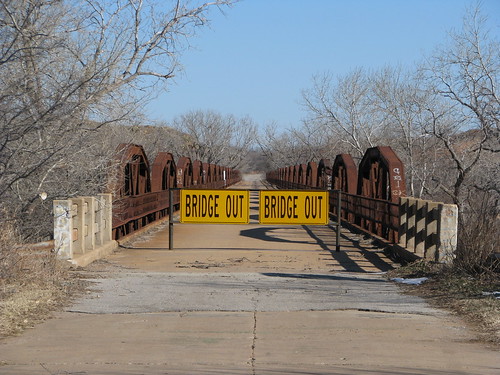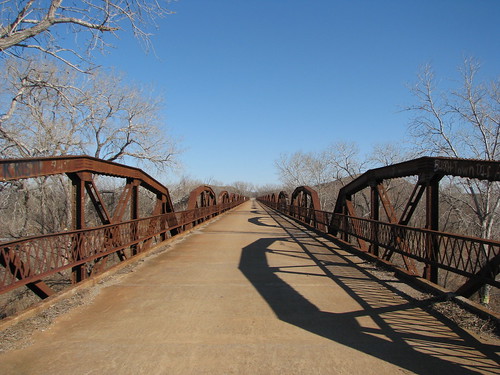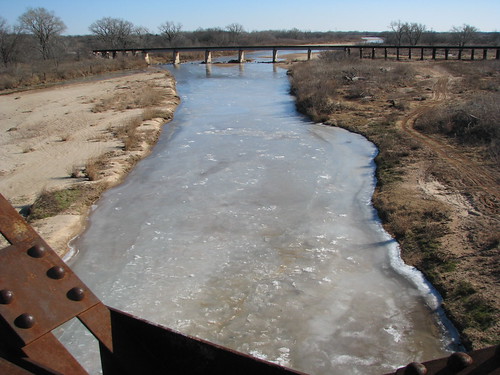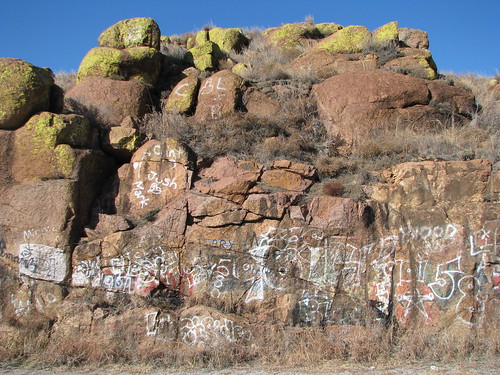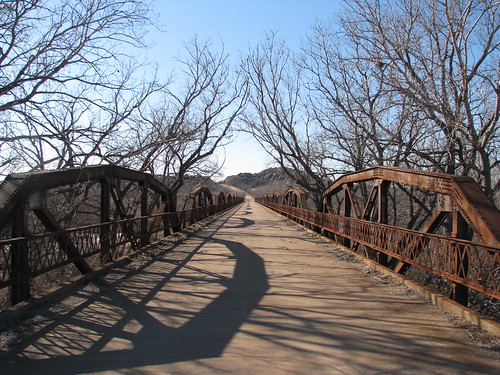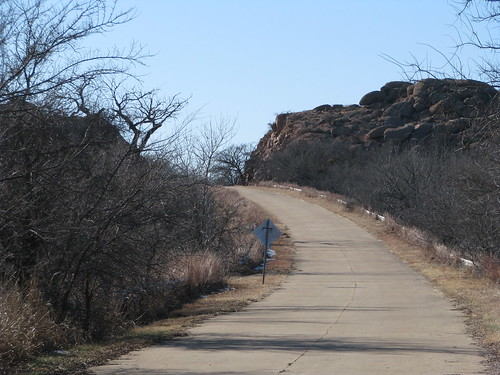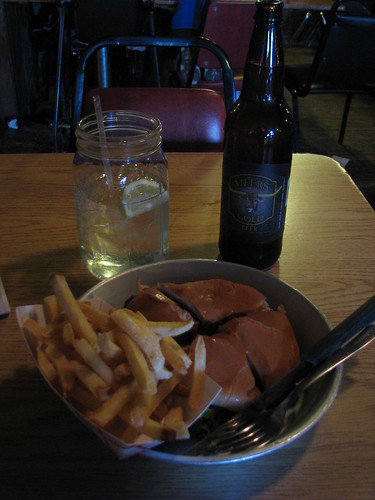Travel: February 2010 Archives
Because this is a long entry, you'll need to click the "Continue reading" link to see the whole thing. Clicking any of the photos will take you to a bigger version and my full set of San Antonio streetscape photos. If you're interested in hotels, restaurants, historic preservation, and entertainment in San Antonio, read on....
Once again last week, business took me to San Antonio. It was a productive trip. We worked second shift instead of third, which was much more pleasant. I was awake enough during the day to get out and enjoy the sunny 60-degree weather.
One of the things I love about San Antonio is the strong commitment to historic preservation, a commitment that dates back almost 90 years. The San Antonio Conservation Society was founded in 1924 "to preserve the 'antiquated foreignness' embodied in San Antonio's charm and character," and it has been successful in that regard, but as a happy side effect, the society's efforts have also succeeded in preserving the early 20th century commercial buildings that were brand new or not even built when the society was founded. The result is a bustling urban downtown as an attraction for tourists and conventioneers.
The story of the San Antonio Conservation Society is worth reading. Like a similar organization in Savannah, it was founded by prominent and wealthy women who were outraged at the threatened destruction of a historic market. And as in Savannah, San Antonio's preservationists lost their first battle but went on to create a culture where history is cherished.
The ladies of the Conservation Society came up with creative ways to make the case for preservation:
In September 1924, after sketching the Commissioners at their weekly meetings, the ladies presented a play called, "The Goose with the Golden Eggs." They performed their play after the commissioners' regular meeting with puppets crafted to look like the men themselves. The commissioners of the play were called upon to arbitrate an argument between Mr. and Mrs. San Antonio over whether San Antonio's character and charms should be killed to achieve prosperity more quickly. Of course, the Conservation Society members in the audience responded, "NO," and many cheered. Preservation of the city's character and charms would reap greater long-term benefits, including civic pride, than the mere accumulation of money.Their response to the notion of filling in the Great Bend, which had been a recommendation in an engineering report, was to take the City Commissioners on a canoe ride on the bend just to show the men how beautiful it was. Many of them had never seen the river from that perspective before and were greeted along the way by children waving and pitching flowers to them from the bridges.
It's always a surprise to get a comment on an old post, usually a pleasant one.
Over the last 24 hours, two old blog entries have received comments.
The first, from Lisa S. of Joshua, Texas, was posted to my July 2008 entry about a visit to the pictographs at Paint Rock, Texas. Last week, she and her dad were heading back home from visiting the town of Paint Rock and decided to follow the signs to the pictographs. I guess she was looking on the web for more info, came across my writeup, and was kind enough to report her own wonderful tour of the pictographs.
The second, from Howard Giles, posted from an Albuquerque, N.M., IP address, complains bitterly about my May 2009 entry on a 1981 Downtown Tulsa Unlimited plan for redeveloping what we now call Brady Arts District (or, better, the Bob Wills District). I had quoted from an April 7, 1981, Tulsa World business news story on the plan, which included extensive quotes from planner John Lauder of Urban Design Group. Mr. Giles thinks I should have done further research -- actually sought out a copy of the plan -- before writing anything about it. I replied: "It's not meant to be a finished piece of research, just a snippet of information I thought deserving of wider exposure. I let my readers know the source of the information and where it could be found so that an interested reader could do further research on his own." In my reply, I invited Mr. Giles to share any specific information he has about the 1981 plan.
Getting caught up:
Early last month (best defined as the very cold windy period between the big Christmas snowstorm and the big late January ice storm), I had two back-to-back business trips, both involving graveyard-shift hours, separated by less than a day at home. The first trip was to Altus AFB, in southwestern Oklahoma.
Altus and I go back 22 years, with trips to work on C-141 and KC-135 simulators in (approximately) 1987, 1996, 1997, 2000, 2006, and 2007. While there's one fastest way between here and there -- I-44 to Lawton then US 62 to Altus, there are plenty of other paths, and I took as many as I could to see as much of southwest Oklahoma as I could -- Cordell, Hobart, Hollis, Granite, Gotebo, Burns Flat (once home to an Air Force Base of its own), Clinton, Weatherford. When I learned at the 1998 National Preservation Conference that Oklahoma had one of the top Main Street small-town revitalization programs in the nation, I could believe it because I'd seen the results in many of these towns.
If I didn't have time to get too far off the straightest route, there were still some interesting but brief diversions along the way. US 62 is now straight as a string from west of Lawton to Altus, but before the 1970s, US 62 followed the railroad and the terrain and passed through several towns: Cache, Indiahoma, Snyder, and Headrick. Most of that old US 62 alignment still exists as county-maintained roads; the Snyder loop is still a designated highway -- US 62 Business.
My very favorite piece of this old road was a four-mile segment, beginning 10.5 miles east of the center of Altus, looping off to the south, through Headrick, then across the North Fork of the Red River and a railroad before rejoining the main road west of Snyder. This piece of road nicks the northwest corner of Tillman County -- an important fact to which I'll return later.
Here's what I wrote about it after a trip three years ago, in a blog entry about the scenic route between Altus and Medicine Park that I started but never finished until tonight:
The road skirts the northern edge of the little town then winds through some some rocky hills and over a long pony truss bridge across the North Fork of the Red River, followed by a through truss bridge over a railroad. The old concrete roadbed, the old style bridges, the pale orange rocks, and the mesquite trees combine to look like a fading slide from a summer vacation out west circa 1947.
The concrete of this old road is in exceptionally good condition, and as I prepared to head back to Tulsa at the end of my most recent visit, I was looking forward to driving it.
But there was a problem:
The problem became an opportunity. While I had driven this road several times before, I had only seen it at 35 or 40 miles per hour. It was a sunny, cold day, but I was bundled up and the wind wasn't too bad, so I decided to go for a walk.
The walk gave me a nice view of the North Fork of the Red River, once claimed by Texas to be the main branch of the river and therefore the border between Texas and Indian Territory. To the west, between the two forks of the Red and the 100th Meridian was Greer County, Texas. A U. S. Supreme Court decision in 1896 proclaimed that this land belonged to Oklahoma. (Here's Texas' side of the story.)
The shallow river was still mostly ice. This photo is looking south toward the BNSF (formerly Frisco) tracks.
The bridge and road are actually in very good condition, but the railroad overpass beyond it is closed and in need of repair.
With the railroad overpass closed, the river bridge (when it was open) formed a very lengthy cul-de-sac, a fact that seemed to have been noted by the area's unruly youths:
According to the Oklahoma Bridges website, the river bridge was closed in October 2009. Built in 1929, the bridge has 23 trusses, is 1,924 feet long. The posted weight limit is 17 tons. It was US 62 until a new, more direct alignment between Altus and the river was opened in 1970.
Regarding the railroad overpass, the Oklahoma Bridges website says:
The left endpost looks as though it was struck, as all the concrete guard rail is missing on the north side of the west approach, and the cover plate on the endpost is damaged. Despite these deficiencies, the bridge was given satisfactory and fair marks in its 2007 inspection. Despite this, and despite the fact it is a heavy bridge, Tillman County decided to close this bridge on Oct. 26, 2009....We at Oklahoma Bridges are hopeful that repairs will be made to this bridge and that it will be reopened. Its closure has also affected another nearby bridge, the Old US 62 North Fork Red River Bridge, which was also closed by neighboring Jackson County because, with this overpass bridge closed, the river bridge dead ends.
So back to the car:
(After the 1.5" of ice they got in late January, I'll bet those trees aren't overhanging the road anymore.)
And back down the highway...
... to my next adventure:
Click any of the above photos to see bigger versions and to explore the rest of my Flickr photoset of my southwest Oklahoma trip, including photos of a monument to the vanished APCO refinery in Cyril and interesting buildings in downtown Altus (before the massive ice storm that knocked power out for more than a week).

